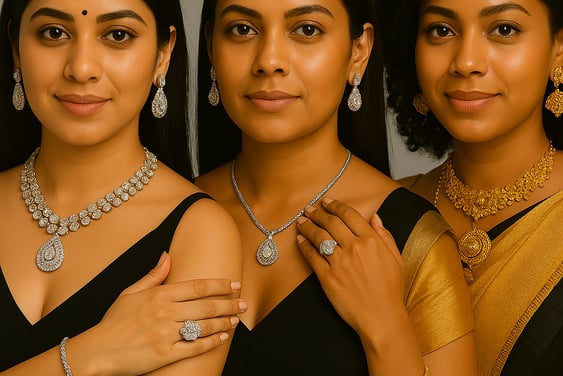Selecting suitable metal for your Precious Jewellery
Choosing the right precious metal for your jewelry is essential, as it determines both its aesthetic appeal and durability. Different metals have unique characteristics that influence their color, strength, and maintenance needs. By selecting the metal that best aligns with your lifestyle and preferences, you ensure that your jewelry remains beautiful and functional for years to come. Beyond practicality, the right metal also holds symbolic and sentimental value. Some metals are ideal for heirlooms, retaining their charm across generations, while others cater to modern trends and personal style choices. Additionally, ethical sourcing plays a crucial role in selecting metals, ensuring that your jewelry reflects responsible craftsmanship. A well-informed choice enriches both the personal and environmental impact of your jewelry, making it a meaningful and lasting investment. Here in this blog in very brief the attributes of available choices in precious metal are explained for an informed decision.
Creativ Instincts Team
5/16/20251 min read


White Gold Vs. Platinum Vs. Yellow Gold
White gold is an alloy made by mixing pure gold with other white metals like nickel, palladium, platinum, or silver. Since gold is naturally yellow, these metals help create a silvery-white appearance. However, white gold often has a slight yellow or gray tint, so it is commonly plated with rhodium to enhance its brightness and durability.
Here's a comparison of white gold, yellow gold, and platinum to help you decide which suits your needs best:
Composition & Appearance
White Gold: Made by mixing pure gold with white metals like nickel, palladium, or silver. It has a bright, silvery-white finish, often enhanced with rhodium plating.
Yellow Gold: Traditional gold alloyed with copper and zinc to maintain its warm, golden hue. It does not require plating and retains its color naturally.
Platinum: A naturally white metal that does not need plating. It is denser and more durable than gold, giving it a premium feel.
Durability & Maintenance
White Gold: Requires rhodium re-plating over time to maintain its shine, as the coating wears off.
Yellow Gold: Less maintenance needed, but it is softer and more prone to scratches.
Platinum: Extremely durable and resistant to tarnishing. Over time, it develops a patina, which some people find appealing.
Cost Comparison
White Gold: More affordable than platinum but requires periodic maintenance.
Yellow Gold: Generally cheaper than white gold and platinum.
Platinum: The most expensive due to its rarity and density.
Hypoallergenic Properties
White Gold: May cause allergies if it contains nickel (some versions use palladium instead).
Yellow Gold: Generally safe for sensitive skin.
Platinum: Hypoallergenic, making it ideal for those with metal sensitivities.
Best Uses
White Gold: For engagement rings and modern jewelry styles.
Yellow Gold: Classic choice for traditional and vintage jewelry.
Platinum: Preferred for luxury jewelry and heirloom pieces due to its durability.